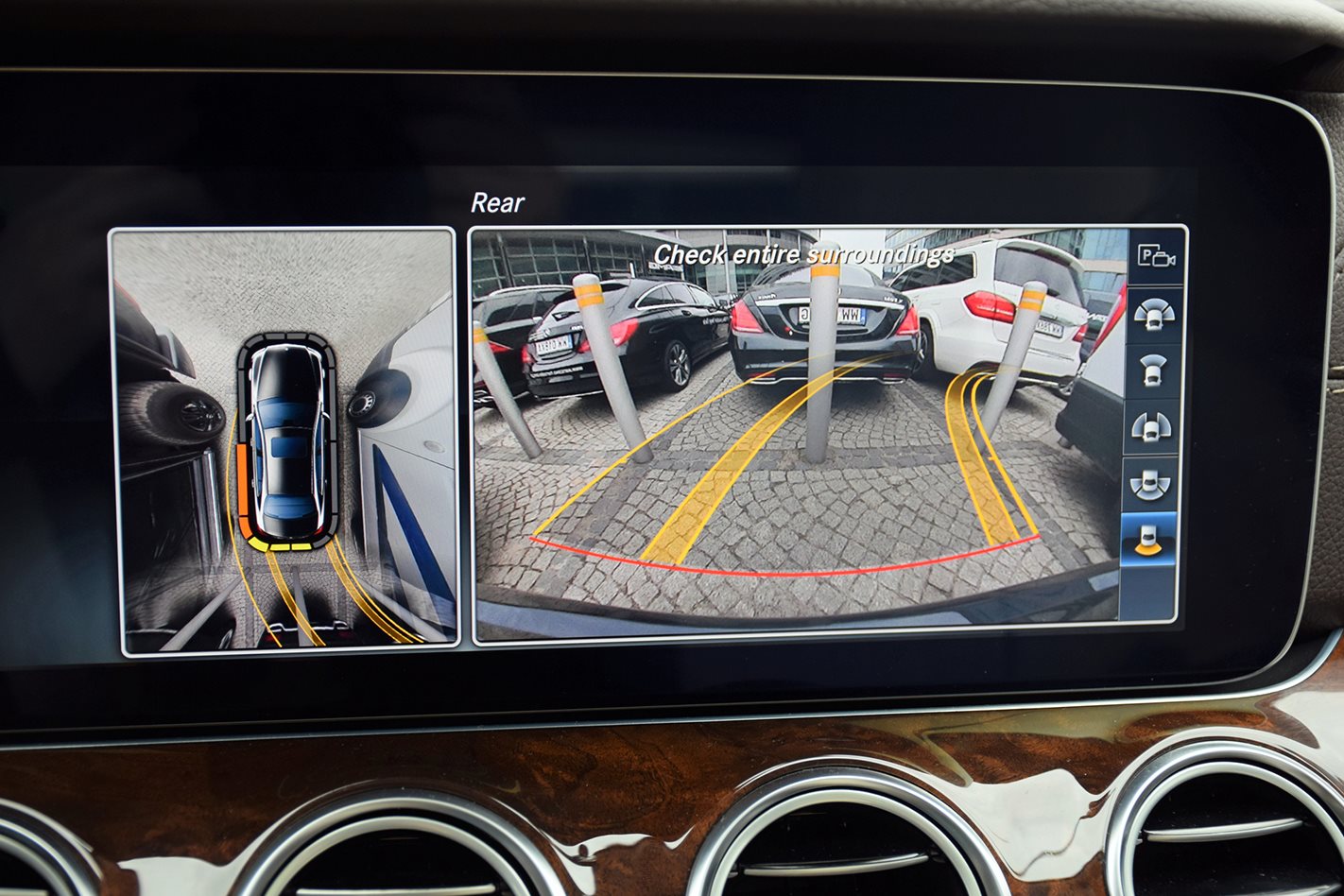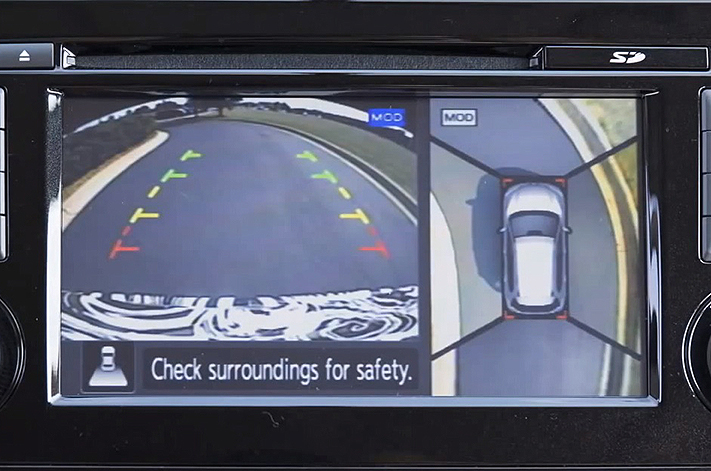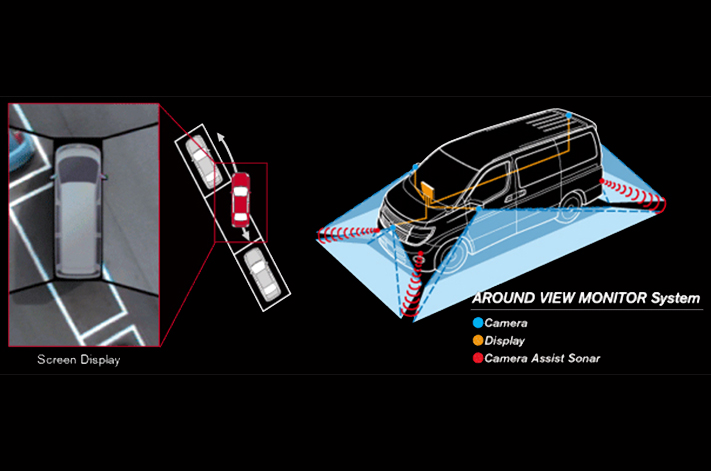
One piece of new-car tech that’s sure to impress is the 360-degree parking monitor (also known as bird’s eye, top-down, around- or surround-view) that shows a simulated view from above the vehicle and what’s around it.
The bird’s-eye image of the car appearing on the touchscreen often has uninitiated passengers demanding to know what kind of wizardry is involved.
While it’s tempting to explain the car launches a drone when you select reverse or that the car manufacturer has an expansive satellite network, the real tech behind it is still pretty clever.
The camera system works by stitching together camera feeds from around the car – usually located in the grille, under the side mirrors and near the boot latch – to provide a holistic view that is displayed on the car’s infotainment screen. Typically you can also select between each of these camera to get a full-screen view of that camera.

The cameras have extremely wide angle lenses in order to capture the most information about what is surrounding you.
Software merges the images to make it look you’re being filmed from about 10 metres directly above, and a picture of a car is provided in the middle to give you a reference point.
The 360-degree image can be shown on a split screen in conjunction with forward, rear or side views, like shown above.
The system works in the same way as a reversing camera by activating when the reverse gear is selected.

With some systems the simulated aerial view can be distorted, so dotted lines are added to provide a true sense of your car’s width to help you avoid obstacles or scrape the kerb.
Audible warnings via front and rear parking sensors are also used to ensure accuracy.
The 360-degree camera is primarily marketed as a safety feature in that it helps spot pedestrians, particularly children, while reversing or manoeuvring into tight spots. But its bread and butter role is helping to prevent bumps and scrapes, saving plenty of money in the long run.




